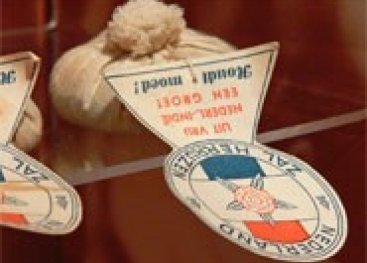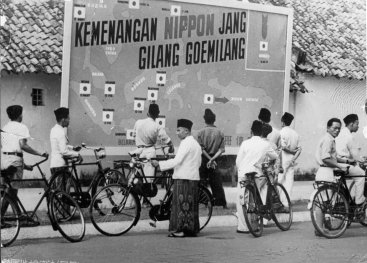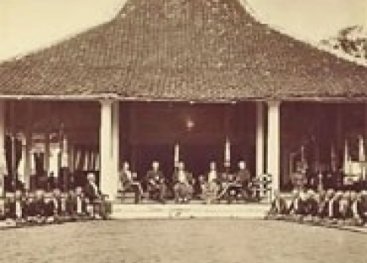
Resistance
Help the allied forces
The first organised resistance groups were formed immediately after the capitulation. Many people believed that the allied forces would defeat the Japanese within a few months. The resistance groups prepared to help the allied forces when they arrived. They collected arms and information of military importance, distributed allied information, made radio contact, and found safe houses where members of the resistance could hide.
Trained in Australia
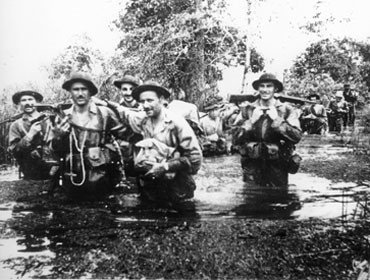
Australia was a base for secret military operations in the Dutch East Indies. Scores of KNIL soldiers had fled there when the Dutch had capitulated. They were trained in Australia and returned home to gather intelligence about the Japanese forces. Similar spying operations were carried out by the Insulinde Corps from Ceylon, commanded by Major Frits Mollinger of the Royal Netherlands East Indies Army (KNIL).
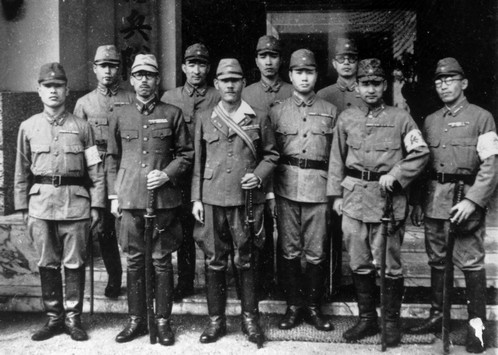
The resistance groups in the Dutch East Indies mainly consisted of people who had managed to stay out of the camps, such as Dutch nationals who had to work for the Japanese, Dutch East Indians with ‘sufficient Indonesian blood’, and Indonesian KNIL soldiers, many of whom were Moluccans. There was also resistance to the Japanese rule inside the camps. The resistance had to work surrounded by enemies and traitors. Very few Indonesians supported the resistance, and the Japanese police, the Kempeitai, were ruthless in putting it down.
Personal stories - Buttons as a keepsake
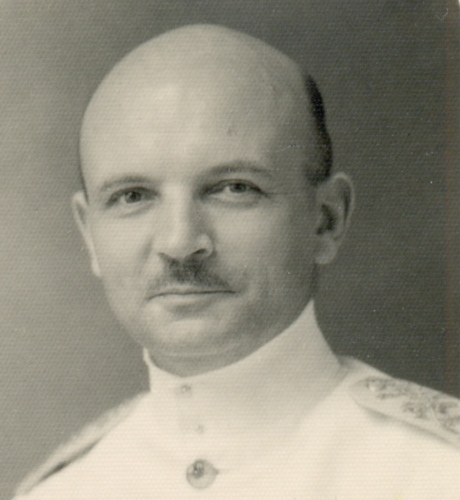 Otto Treffers, the assistant-resident on North Sumatra, began a resistance group shortly after the Japanese invasion. Once interned, he kept in touch with resistance workers outside the camp. His daughter Ankie was in a different camp, together with her mother and sister. “We still kept in touch. Notes from my father were smuggled out of his camp, and we managed to write back. The letter always said: ‘Don’t keep these, it’s dangerous’. But my mother kept all the letters. One day, a Red Cross nurse told us that my father had been taken away to be shot. A few days later, the Japanese camp commander gave us the official confirmation. We were given a little box with his buttons and cuff links, and the badge from his helmet.”
Otto Treffers, the assistant-resident on North Sumatra, began a resistance group shortly after the Japanese invasion. Once interned, he kept in touch with resistance workers outside the camp. His daughter Ankie was in a different camp, together with her mother and sister. “We still kept in touch. Notes from my father were smuggled out of his camp, and we managed to write back. The letter always said: ‘Don’t keep these, it’s dangerous’. But my mother kept all the letters. One day, a Red Cross nurse told us that my father had been taken away to be shot. A few days later, the Japanese camp commander gave us the official confirmation. We were given a little box with his buttons and cuff links, and the badge from his helmet.”

The Haga conspiracy
After the Japanese invasion of Borneo, many Dutch government civil servants were murdered on the spot to avenge the destruction of the oil installations. Governor Haga was detained in a camp. He received support from people outside the camp. The Japanese found out. They believed Haga was head of a widespread conspiracy. Many arrests followed and around 150 people were executed. There were threatening reports in the papers. Haga himself died of a heart attack during the court case.
Resistance around Bandung
The main resistance group in Bandung was the Java Legion, led by the Dutch captain De Lange. Groups of Moluccan ex-soldiers joined his group. Boy scouts and schoolchildren were used for communications.
“I served as a motorbike courier and took messages everywhere. I would sometime spend 14 to 16 hours on my motorbike. I had an armband with Japanese characters. One day, I accidentally drove behind the Japanese lines. I will never forget that. A bayonet was put to my chest and I thought: I’m a dead man. But my armband read ‘Kempeitai’, military police. I was allowed through.”
Dutch East Indian Dick van Logchem
“We had to supply guerrillas high up in the mountains with food, weapons and ammunition. I also had to spy on people involved in suspicious activities, and stand watch at night. I would carry a blanket in a KNIL rucksack to keep myself warm.”
Fifteen-year-old Dutch East Indian Herfi Bouman
Teatime
The Moluccan resistance group led by Job Kaihatu in Bandung worked closely with Captain De Lange’s resistance group.
“Every afternoon at four o’clock, there were so-called tea gatherings in my daddy’s back garden to exchange information with other members of the Moluccan resistance. At night, after dark, weapons would be hidden in large petrol cans.” Nora’s husband-to-be, Dutch East Indian Wim Robijn, also got involved in the resistance group.
Daughter Nora Kaihatu
“Wim came into hiding with us to avoid being detained in a camp. An uncle who was village elder gave him forged identity papers. From then on his name was Wim Kaihatu. He delivered weapons in Bandung, for instance during a milk round. He had two strong bags on his bike. Each one contained bottles of milk with weapons hidden among them.”
Nora
The night-watch groups
After the capitulation, the Indonesian soldiers were released from captivity. Moluccan soldiers formed night-watch groups. They protected European families who had not yet been interned in camps against so-called rampokkers (plunderers).
“Together with a group of Moluccans, I set up a kind of night security service in Batavia. We protected the women who were not yet in the camp, because there were very strong ‘anti-belanda’ (anti-Dutch) sentiments. Together with my friends, I also collected weapons and explosives to sabotage Japanese targets and to fight the Japs if the Americans came.”
Nono Tanasale, organised resistance activities under the cover of a night-watch group
Spectacular weapons theft
There were good contacts between the Moluccan resistance groups in Batavia and Bandung. The key figures were the Kaihatu brothers, Jan in Batavia and Job in Bandung. In August 1942, they received word that there was a railway wagon full of weapons and ammunition at a marshalling yard in Batavia. A group of resistance workers opened the wagon and some of the guns and ammunition were hidden in Jan Kaihatu’s yard.
The Japanese discovered what he had done. Shortly before he was arrested he managed to get the wagon with the remaining weapons to Bandung. The wagon was connected to a normal goods train to Bandung, where people from Job’s group disconnected it again. They used the weapons in their resistance activities.
Meelhuysen, alias Tahir
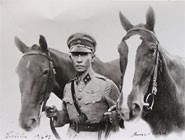
The plane flown by Dutch East Indian captain Wil Meelhuysen was shot down during the Japanese invasion. He survived and went into hiding in Surabaya. While there, he set up a resistance group, dressed as an Indonesian and with the false name Tahir. His sister Godie Meelhuysen helped him. The group collected weapons and information. In late 1942, a few members of the group were arrested. Meelhuysen turned himself in, claimed responsibility for everything and killed himself in his cell on 21 December 1942.
“After the Japanese invasion, we never heard from my father. One day I was called out of the classroom. I went outside and saw an Indonesian dressed in jacket and sarong. He was also wearing a black ‘koeploe’, one of those typical Indonesian hats. He looked at me and said: ‘Piet, your father is still alive.’ I recognised him immediately, but was afraid to say anything, so I went back inside. That was the last time he spoke to me.”
His son Piet
Guerrilla operations on New Guinea
Pieter de Kock was active in a guerrilla group in the jungle of New Guinea. The group consisted of four combat units headed by Kokkelink and Willemsz Geeroms. The guerrilla fighters gathered information about the enemy with the help of native Papuans, and attacked Japanese patrols. De Kock’s resistance group battled on and, in 1944, made contact with the allies that liberated them in October of that year. It was the only resistance group to survive, in part, until the liberation.
“I was 23 when the war broke out. We had successes but we also lost people. In April, the enemy attacked our headquarters. Commander Willemsz Geeroms was captured and later beheaded. After 30 months of guerrilla fighting, our 66-strong unit had been reduced to just 14. I was one of them. We presented the Dutch flag, the symbol of our determination and signed with our names, to Queen Wilhelmina.”
Pieter de Kock
Girl amongst men
Moluccan 15-year-old Coosje Ayal lived with her uncle and aunt on New Guinea. When the Japanese entered their village, she fled inland with Willemsz Geeroms’s guerrilla group.
“The men said: ‘We will not treat you as a girl, but as one of the soldiers. If you can accept that, you can stay with us.’ We kept walking through the jungle, carrying guns and rucksacks. (...) The final months were the hardest, we were eating snakes, crocodiles and tortoises.”
Coosje Ayal
Parties

After the KNIL had surrendered, some soldiers fled to Australia to continue the fight from there. They formed small units, parties, that returned to the Dutch East Indies to gather military information about the Japanese. There were around 10 parties in all. In November 1944, one led by H.J. de Haas left for Java. They were discovered by the Japanese in early 1945. De Haas was executed on 15 August 1945.
“My father made the journey across the ocean to Australia with this compass in 30 days. Once he got there, he was questioned thoroughly, because they wouldn’t believe that he could have escaped the East Indies. All his possessions were taken away from him. They were sent to my mother only after the war had ended.”
His son Gustaaf
Insulinde Corps
Members of the Insulinde Corps travelled from Ceylon to Sumatra in a submarine. There, they gathered information and made contact with the local population. The corps carried out seven large operations.
Wim Scheepens led a few of the actions. He used aerial photographs of the area. He wrote to his wife before every operation: “My darling wife, tonight I will once again take a submarine to Aceh and I am writing to you in case I don’t return. The previous trip went well. (...) In the beginning, the locals were threatening, but once they recognised me and heard that our intentions were good they changed immediately and helped out in every possible way. (...) When I'm sick or in danger, I always think mostly of you. (...) I will do everything I can for the liberation of the East Indies and thus for your liberation too. Goodbye my darling. Keep loving me as I love you. Wim.”
Happy
Albert Plesman took part in an operation of the Insulinde Corps led by Major G.F. Jacobs. He was charged with establishing reliable contacts with the population on Sumatra. Plesman carried an espionage manual and a piece of fabric stating who he was in Malayan.
“Of all the people I have ever met, this thickset Dutchman with his cropped hair and sparkling grey eyes - the son of the famous KLM director - was the one who was least easily daunted. He was able to assess every situation in a flash, and partly because of that he could deal with anything that happened. Less than a day after our group had been formed, he had already been nicknamed ‘Happy’ and we never called him by another name after that.”
Jacobs on Plesman
